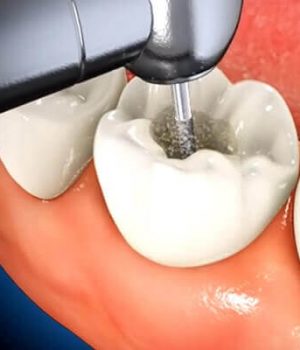AFFORDABLE ROOT CANAL
Treatment Prices in Germantown
Cavities, repeated dental procedures, extensive fillings, cracks, chips, and facial trauma can cause irritation, inflammation or infection of the dental nerve and pulp. Without treatment, the tissues adjacent to the tooth can become infected and cause an abscess. If necessary, root canal treatment may be necessary in order to preserve the affected tooth.


What Is Root Canal Treatment?
Root canal treatment is a dental procedure that may be required in moderate in severe cases of caries. The procedure is used to treat infections that have affected the center or pulp of the tooth where the blood vessels and nerves to the tooth are contained. This type of treatment is also called endodontics.
The tooth consists of an outer or ivory enamel and inner hard panel that surrounds the soft pulp in the center of the tooth. The top and visible part of the tooth is called the head, and the part buried in the jawbone is the bottom of the tooth which attaches it to the jawbone. The root canal contains the inner pulp which runs from the head to the bottom. There can be more than one root canal in a tooth. There used to be typically one root canal for the obverse canine and incisor teeth, while bicuspids and molars can have 2 to 3 root canals.
Need For Root Canal Treatment
Root canal treatment use to be often given in those with deterioration instigated by bacteria existing inside the mouth. It can clue to:
- Infection of the tooth pulp which may shrink and die. As the infection progresses, the bacteria penetrate the bottom and lead to inflammation of the tissues around the end of the tooth, leading to toothache and even dental abscesses.
- Severe damage to the teeth with erosion of the enamel and exposure of the inner pulp of the tooth.
- Leaking filling and exposure of tooth pulp.
What Is Involved In Root Canal Treatment
Before treatment is started, an x-ray of the affected tooth is taken to determine the degree of damage. The area to be treated is then numbed using a local anesthetic injection to make sure the procedure is painless.
The tooth is open at the head to allow access to the root canal medially. Any infected pulp is removed and abscesses can be drained to ensure that the tooth is infection-free, a very important step in root canal treatment.
Once all of the infection is removed, the root canal is cleaned and formed for the filling. A bottom filling made of rubber material is then compressed into the canal to seal it permanently. After the root canal filling, the tooth is put back and sealed with a different filling or head. This process may involve multiple visits to the dentist and may take longer when the rear rather than the front teeth are involved.
Reasons For Restatement:
Complexity of Canals: Sometimes a person has ducts that are curved, narrow or have a complex structure. The dentist can then not deal with this during the initial procedure.
Late Installation of Restorations: If the restorations are not placed within an appropriate time after the initial root canal treatment procedure, the canals may become re-infected or require additional treatment.
Inadequate Placement of Restorations: When a professional does not place the restoration correctly, saliva can sometimes contaminate the inside of the tooth.
Fracture of The Restoration: Sometimes a new decay causes the restoration to loosen and fracture it or the tooth. If this happens, the tooth is exposed to a new infection.
Inadequate Treatment: Inadequate treatment on the root system of the tooth on a first attempt may require retreatment.
Foreign Body: During the initial procedure, a foreign body or object, such as a broken file, may remain inside the tooth. Although this happens very rarely, if necessary, retreatment is necessary.
